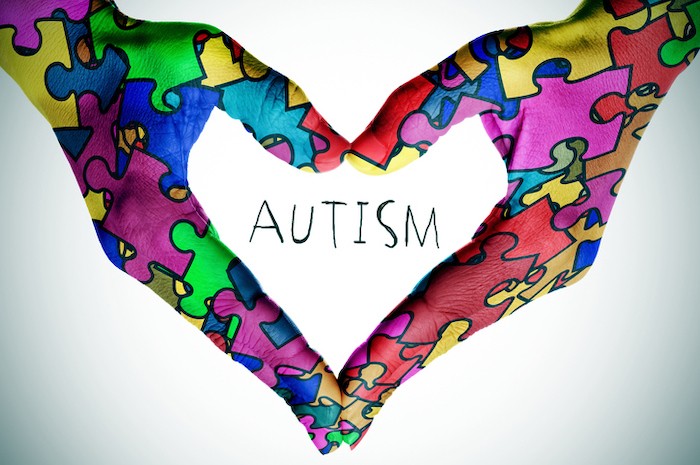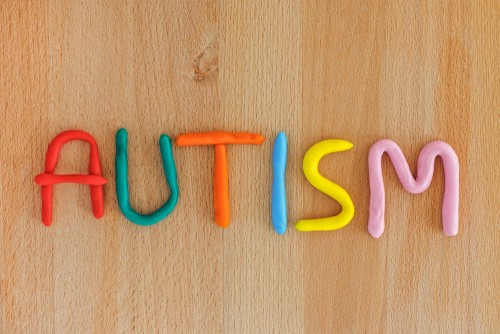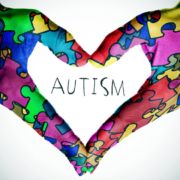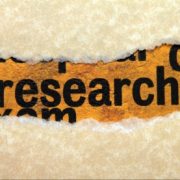Autism treatment in Santa Ana, CA
Caring for an individual diagnosed with Autism Spectrum Disorder (ASD) can present many challenges. The good news is that there are autism treatment options in Santa Ana, CA so that you don’t have to do it alone. While no autism treatment has been shown to cure autism, several intervention options are utilized to reduce symptoms, improve cognitive ability and daily living skills, and maximize the ability of the child to function and participate in the community. The most widely accepted treatment for individuals diagnosed with autism is Applied Behavior Analysis (ABA) therapy. Applied Behavior Analysis (ABA) therapy is an evidence-based scientific technique used in treating individuals with Autism Spectrum Disorder (ASD) and other developmental disabilities. In general, ABA therapy relies on respondent and operant conditioning to change or alter behaviors of social significance. The ultimate goal of ABA therapy is for the learner to gain independence by learning and developing new skills resulting in an increase in positive behavior while reducing the frequency of negative behaviors. LeafWing Center provides Applied Behavioral Analysis therapy in Santa Ana, CA (and in homes, schools, and other locations throughout southern California) for the treatment of individuals diagnosed with autism.

Who provides autism treatment in Santa Ana, CA?
For those families residing in Santa Ana who are coping with the impact of autism, LeafWing Center’s ABA therapy program focuses on improving the learner’s foundational behavior and social interactions such as playing, learning, and sharing. LeafWing Center’s team of highly trained experts based conveniently near Santa Ana understand what you are going through and can offer assistance.
It is crucial that parents and families have access to autism treatment resources that are geared toward comprehensive, intensive intervention. The sooner an individualized autism treatment plan is put into place, the sooner you will start noticing measurable results. And that is the key—measuring and monitoring every step of the way. At the LeafWing Center, we provide a thorough assessment of every child. Based upon this assessment, we devise a plan moving forward. This is why so many families residing in Santa Ana have put their trust in the autism treatment resources we offer.
How to get started with LeafWing Center’s autism treatment in Santa Ana, CA
LeafWing Center provides autism treatment in Santa Ana, CA. For individuals diagnosed with autism, ABA therapy is an effective program used to teach a learner specific skills that may not be in that learner’s repertoire of skills to help him/her function better in their environment (whether that be at home, school, or out in the Santa Ana, CA community.) In conjunction with skill acquisition programs, ABA-based interventions can also be used in addressing behavioral excesses (e.g., tantrum behaviors, aggressive behaviors, self-injurious behaviors). Additionally, ABA therapy programs are effective in providing training to the learner’s parent or caregiver.
Contact LeafWing Center to schedule an assessment to begin autism treatment. After the assessment is complete, and your funding source has provided authorization for ABA services, your provider will assign a team for your child. This team will include a Supervisor and one or several Behavior Technicians. Expect to receive a schedule of services before the beginning of each month. Additionally, expect your ABA provider to reach out to you to receive your availability for services and to create a schedule that best fits your loved one’s needs.

Insurance coverage for ABA therapy in Santa Ana, CA
LeafWing Center works with an ever-growing number of insurance provides who cover ABA therapy for the treatment of autism. Here are just a few of the providers with whom we work:
- Aetna
- Anthem Blue Cross of California
- Beacon Health Options
- Beacon Health Strategies
- Blue Cross/Blue Shield of Illinois
- Blue Cross/Blue Shield of Texas
- Blue Cross/Blue Shield of Washington
- Blue Shield of California
- Blue Shield of California Promise Health Plans
- CalOptima Direct (Orange office only)
- CIGNA
- Comprehensive Care Corp./Advanzeon Solutions Incorporated
- Comprehensive Behavioral Care Incorporated
- LA Care Sherman Oaks only)
- Magellan
- MHN Managed Health Network Incorporated
- Molina Healthcare of California
- Health Plus aka Multiplan
- Magna Care aka Multiplan
- Managed Health Network Incorporated aka MHN
- Meritain Health
- Optum UBH
- Optum Health Behavioral Solutions
- Pacific Care Behavioral Health
- SCS-UBH aka Optum/UBH
- United Medical Resources
- United Health Care
- Windstone Behavioral Health
LeafWing Center staff is happy to work with you to help determine if your insurance provides coverage for our ABA therapy services.

Autism treatment and initial assessments in Santa Ana, CA
In skill acquisition programs, a child’s repertoire of skills is assessed in the beginning phase of the services in key adaptive areas such as communication/language, self-help, social skills, and motor skills as well. Once skills to be taught are identified, a goal for each skill is developed and then addressed/taught by using ABA-based techniques to teach those important skills. Ultimately, an effective ABA-based therapy program will facilitate a degree of maintenance (i.e., the child can still perform the learned behaviors in the absence of training/intervention over time) and generalization (i.e., the learned behaviors are observed to occur in situations different from the instructional setting). These two concepts are very important in any ABA-based intervention and are both incorporated in every learner’s therapy program in Santa Ana, CA.
Social communication and interaction
A child or adult with autism spectrum disorder may have the following problems with social interaction and communication skills:
- Fails to respond to his or her name or appears not to hear you at times
- Resists cuddling and holding, and seems to prefer playing alone, retreating into his or her own world
- Has poor eye contact and lacks facial expression
- Doesn’t speak or has delayed speech, or loses previous ability to say words or sentences
- Can’t start a conversation or keep one going, or only starts one to make requests or label items
- Speaks with an abnormal tone or rhythm and may use a singsong voice or robot-like speech
- Repeats words or phrases verbatim, but doesn’t understand how to use them
- Doesn’t appear to understand simple questions or directions
- Doesn’t express emotions or feelings and appears unaware of others’ feelings
- Doesn’t point at or bring objects to share interest
- Inappropriately approaches a social interaction by being passive, aggressive or disruptive
- Has difficulty recognizing nonverbal cues, such as interpreting other people’s facial expressions, body postures or tone of voice
In behavior management, the challenging behaviors are assessed for their function in the beginning phase of the services. In this phase, the “why does this behavior happen in the first place?” is determined. Once known, an ABA-based therapy program will be developed to not just decrease the occurrence of the behavior being addressed, but also teach the child a functionally-equivalent behavior that is socially-appropriate. For example, if a child resorts to tantrum behaviors when she is told she cannot have a specific item, she may be taught to accept an alternative or find an alternative for herself. Of course, we can only do this up to a certain point—the offering of alternatives. There comes a point when a ‘no’ means ‘no’ so the tantrum behavior will be left to run its course (i.e., to continue until it ceases). This is never easy and will take some time for parents/caregivers to get used to, but research has shown that over time and consistent application of an ABA-based behavior management program, the challenging behavior will improve.
Getting to know your Santa Ana, CA autism treatment team
LeafWing Center is committed to ensuring that each of its learners, as well as the learner’s family and caregivers, is comfortable with their assigned Santa Ana autism treatment therapy team. Particularly in the early stages of the program, rapport building is essential to the success of therapy. The staff assigned to work on your child’s team will strive to build a positive relationship with your loved one. Not only is this rapport building important at the beginning of services, it should be maintained throughout the duration of the program. Therefore, families can expect the first couple weeks of ABA therapy to include a lot of play and conversation with their child. Simply put, your child should feel comfortable and have fun with the Behavior Technicians. This helps ensure that your child associates positive experiences with the Behavior Technicians. This also helps with learning rates and ultimately produces more desirable outcomes.
Expect collaboration and communication from your Santa Ana ABA therapy team. The Supervisor on your team will communicate with you to make sure your questions and goal preferences are addressed. Additionally, with your permission, the Supervisor may ask to get in contact with your child’s other service providers (speech therapists, school teachers, etc.) so that coordination of care can be established and that everyone is working collectively toward the same goals.
Autism treatment in Santa Ana, CA: What to expect
LeafWing Center’s autism treatment program in Santa Ana, CA mirrors any of our programs regardless of location. We provide autism treatment in Santa Ana to make it convenient for the parents or caregivers to ensure consistency in treatment for the learner. There are times throughout any given month where a supervisor may observe a session with a learner to ensure the treatment is being executed correctly and to address any concerns or questions that may arise. These overlaps and team meetings are imperative as they help ensure treatment consistency, progress, relevancy, and communication between all members of your child’s ABA team. An ABA therapy program is highly customizable.
- ABA therapy is adaptable to meet the needs of each unique person
- Therapy can be offered in multiple settings – home, at school, and in the community
- Teaches practical skills that have application in everyday life
- Can be offered either in one-to-one or group instruction

Our Santa Ana, CA autism treatment team will create an individualized program for your autistic child
Despite where your child may be on the autism spectrum, there is hope for a dynamic, bright and fulfilling future for your child. The sooner autism is treated, the greater the likelihood of positive treatment results. Getting the autism diagnosis is the first step. From there, it’s a process of developing relationships with a team of LeafWing Center’s well-qualified and experienced treatment professionals who will help guide your family through the various hurdles and challenges you may face. LeafWing Center provides an individualized autism treatment approach that helps ensure your loved one is better prepared to cope with whatever comes his/her way. Taking advantages of resources and services available right here in Santa Ana is going to be a key part of helping your loved one become more comfortable within a wide array of social settings. There is no “one format” that will fit all children and their families’ needs. The ABA professionals you’re currently working with, with your participation, will develop an ABA-based treatment package that will best fit your child’s and your family’s needs. For more information regarding this topic, we encourage you to speak with your BCBA or reach out to us at info@leafwingcenter.
Frequently asked questions about ABA therapy
What is ABA Therapy used for?
ABA-based therapy can be used in a multitude of areas. Currently, these interventions are used primarily with individuals living with ASD; however, their applications can be used with individuals living with pervasive developmental disorders as well as other disorders. For ASD, it can be used in effectively teaching specific skills that may not be in a child’s repertoire of skills to help him/her function better in their environment whether that be at home, school, or out in the community. In conjunction with skill acquisition programs, ABA-based interventions can also be used in addressing behavioral excesses (e.g., tantrum behaviors, aggressive behaviors, self-injurious behaviors). Lastly, it can also be utilized in parent/caregiver training.
In skill acquisition programs, a child’s repertoire of skills is assessed in the beginning phase of the services in key adaptive areas such as communication/language, self-help, social skills, and motor skills as well. Once skills to be taught are identified, a goal for each skill is developed and then addressed/taught by using ABA-based techniques to teach those important skills. Ultimately, an ABA-based therapy will facilitate a degree of maintenance (i.e., the child can still perform the learned behaviors in the absence of training/intervention over time) and generalization (i.e., the learned behaviors are observed to occur in situations different from the instructional setting). These two concepts are very important in any ABA-based intervention.
In behavior management, the challenging behaviors are assessed for their function in the beginning phase of the services. In this phase, the “why does this behavior happen in the first place?” is determined. Once known, an ABA-based therapy will be developed to not just decrease the occurrence of the behavior being addressed, but also teach the child a functionally-equivalent behavior that is socially-appropriate. For example, if a child resorts to tantrum behaviors when she is told she cannot have a specific item, she may be taught to accept an alternative or find an alternative for herself. Of course, we can only do this up to a certain point—the offering of alternatives. There comes a point when a ‘no’ means ‘no’ so the tantrum behavior will be left to run its course (i.e., to continue until it ceases). This is never easy and will take some time for parents/caregivers to get used to, but research has shown that over time and consistent application of an ABA-based behavior management program, the challenging behavior will get better.
In parent training, individuals that provide care for a child may receive customized “curriculum” that best fit their situation. A typical area covered in parent training is teaching responsible adults pertinent ABA-based concepts to help adults understand the rationale behind interventions that are being used in their child’s ABA-based services. Another area covered in parent training is teaching adults specific skill acquisition programs and/or behavior management programs that they will implement during family time. Other areas covered in parent training may be data collection, how to facilitate maintenance, how to facilitate generalization of learned skills to name a few.
There is no “one format” that will fit all children and their families’ needs. The ABA professionals you’re currently working with, with your participation, will develop an ABA-based treatment package that will best fit your child’s and your family’s needs. For more information regarding this topic, we encourage you to speak with your BCBA or reach out to us at info@leafwingcenter.org.
Who Can Benefit From ABA Therapy?
There is a common misconception that the principles of ABA are specific to Autism. This is not the case. The principles and methods of ABA are scientifically backed and can be applied to any individual. With that said, the U.S. Surgeon General and the American Psychological Association consider ABA to be an evidence based practice. Forty years of extensive literature have documented ABA therapy as an effective and successful practice to reduce problem behavior and increase skills for individuals with intellectual disabilities and Autism Spectrum Disorders (ASD). Children, teenagers, and adults with ASD can benefit from ABA therapy. Especially when started early, ABA therapy can benefit individuals by targeting challenging behaviors, attention skills, play skills, communication, motor, social, and other skills. Individuals with other developmental challenges such as ADHD or intellectual disability can benefit from ABA therapy as well. While early intervention has been demonstrated to lead to more significant treatment outcomes, there is no specific age at which ABA therapy ceases to be helpful.
Additionally, parents and caregivers of individuals living with ASD can also benefit from the principles of ABA. Depending on the needs of your loved one, the use of specified ABA techniques in addition to 1:1 services, may help produce more desirable treatment outcomes. The term “caregiver training” is common in ABA services and refers to the individualized instruction that a BCBA or ABA Supervisor provides to parents and caregivers. This typically involves a combination of individualized ABA techniques and methods parents and caregivers can use outside of 1:1 sessions to facilitate ongoing progress in specified areas.
ABA therapy can help people living with ASD, intellectual disability, and other developmental challenges achieve their goals and live higher quality lives.
What does ABA Therapy look like?
Agencies that provide ABA-based services in the home-setting are more likely to implement ABA services similarly than doing the same exact protocols or procedures. Regardless, an ABA agency under the guidance of a Board-Certified Behavior Analyst follows the same research-based theories to guide treatment that all other acceptable ABA agencies use.
ABA-based services start with a functional behavior assessment (FBA). In a nutshell, a FBA assesses why the behaviors may be happening in the first place. From there, the FBA will also determine the best way to address the difficulties using tactics that have been proven effective over time with a focus on behavioral replacement versus simple elimination of a problem behavior. The FBA will also have recommendations for other relevant skills/behaviors to be taught and parent skills that can be taught in a parent training format to name a few. From there, the intensity of the ABA-based services is determined, again, based on the clinical needs of your child. The completed FBA is then submitted to the funding source for approval.
One-on-one sessions between a behavior technician and your child will start once services are approved. The duration per session and the frequency of these sessions per week/month will all depend on how many hours your child’s ABA services have been approved for—usually, this will be the number recommended in the FBA. The sessions are used to teach identified skills/behaviors via effective teaching procedures. Another aspect of ABA-based services in the home-setting is parent training. Parent training can take many forms depending on what goals have been established during the FBA process. The number of hours dedicated for parent training is also variable and solely depends on the clinical need for it. If a 1:1 session is between a behavior technician and your child, a parent training session or appointment is between you and the case supervisor and with and without your child present, depending on the parent goal(s) identified. Parent training service’s goal is for you to be able to have ample skills/knowledge in order for you to become more effective in addressing behavioral difficulties as they occur outside of scheduled ABA sessions. Depending on the goals established, you may be required to participate in your child’s 1:1 sessions. These participations are a good way for you to practice what you have learned from the case supervisor while at the same time, having the behavior technician available to you to give you feedback as you practice on those new skills.
As mentioned in the beginning, no two ABA agencies will do the same exact thing when it comes to providing ABA services; however, good agencies will always base their practice on the same empirically-proven procedures.
How do I start ABA Therapy?
In most cases, the first item required to start ABA therapy is the individual’s autism spectrum disorder (ASD) diagnosis report. This is typically conducted by a doctor such as a psychiatrist, psychologist, or a developmental pediatrician. Most ABA therapy agencies and insurance companies will ask for a copy of this diagnosis report during the intake process as it is required to request an ABA assessment authorization from the individual’s medical insurance provider.
The second item required to start ABA therapy is a funding source. In the United States, and in cases where Medi-Cal or Medicare insurances are involved, there is a legal requirement for ABA services to be covered when there is a medical necessity (ASD diagnosis). Medi-Cal and Medicare cover all medically necessary behavioral health treatment services for beneficiaries. This typically includes children diagnosed with ASD. Since Applied Behavior Analysis is an evidence based and effective treatment for individuals with ASD, it is considered a covered treatment when medically necessary. In many cases, private insurance will also cover ABA services when medically necessary, however in these cases, it is best to speak directly with your medical insurance provider to determine the specifics of the coverage and to ensure that ABA is in fact, a covered benefit. Additionally, some families opt to pay for ABA services out-of-pocket.
The next step to starting ABA therapy is to contact an ABA provider whom you are interested in working with. Depending on your geographic location, ABA agencies exist in many cities across the United States. Your insurance carrier, local support groups, and even a thorough online search can help you find reputable and properly credentialed ABA agencies near you. Our organization, LeafWing Center, is based in southern California and is recognized for aiding people with ASD achieve their goals with the research based on applied behavior analysis.
Once you have identified the ABA provider with whom you wish to work, they should help you facilitate the next steps. These will include facilitating paperwork and authorizations with your funding source. Once the assessment process begins, a BCBA (Board Certified Behavior Analyst) or qualified Program Supervisor should get in contact with you to arrange times in which interviews with parents/caregivers and observations of your loved one can be conducted. This will help in the process of gathering important clinical information so that with your collaboration, the most effective treatment plans and goals can be established for your loved one. This process is referred to as the Functional Behavior Assessment (FBA) and is elaborated on in different blog posts on our website. With regard as to what can be expected once ABA therapy begins, please read our blog post titled: When You Start an ABA program, What Should You Reasonably Expect from Your Service Provider?



 Yes—research does show that ABA is successful in treating children living with autism. As a matter of fact, since the early 1960s, the effectiveness of ABA based interventions has been very well documented particularly when helping children with developmental disabilities. Over 400 research articles were published between 1964 and 1970 alone and all have concluded that behavior analytic interventions demonstrated the most consistent results with individuals living with developmental disabilities. From the mid ‘80’s to 2010, there were over 500 peer-reviewed, published articles on autism and Applied Behavior Analysis.
Yes—research does show that ABA is successful in treating children living with autism. As a matter of fact, since the early 1960s, the effectiveness of ABA based interventions has been very well documented particularly when helping children with developmental disabilities. Over 400 research articles were published between 1964 and 1970 alone and all have concluded that behavior analytic interventions demonstrated the most consistent results with individuals living with developmental disabilities. From the mid ‘80’s to 2010, there were over 500 peer-reviewed, published articles on autism and Applied Behavior Analysis.
 Senate Bill 946, passed by the State Assembly and the State Senate on September 9th, 2011 and signed by then Governor Brown and filed with the Secretary of State on October 9th, 2011 is a monumental step for individuals with Autism and Pervasive Developmental Disorder (PDD) in California. The new law took effect on July 1st, 2012.
Senate Bill 946, passed by the State Assembly and the State Senate on September 9th, 2011 and signed by then Governor Brown and filed with the Secretary of State on October 9th, 2011 is a monumental step for individuals with Autism and Pervasive Developmental Disorder (PDD) in California. The new law took effect on July 1st, 2012.
 Applied Behavior Analysis is the applied science of behavior formalized by B.F. Skinner. It is sometimes referred to as Behavior Modification, ABA, or Behavior Analysis. The theories, laws, and techniques have their foundations in years of basic research and describe some of the most fundamental things we know about behavior. Some early influences on the field of ABA include Watson, Thorndyke, Pavlov, and groups of psychologists, philosophers, and scientists in the late 1800’s and early 1900’s that pursued empirical science.
Applied Behavior Analysis is the applied science of behavior formalized by B.F. Skinner. It is sometimes referred to as Behavior Modification, ABA, or Behavior Analysis. The theories, laws, and techniques have their foundations in years of basic research and describe some of the most fundamental things we know about behavior. Some early influences on the field of ABA include Watson, Thorndyke, Pavlov, and groups of psychologists, philosophers, and scientists in the late 1800’s and early 1900’s that pursued empirical science.
 When creating an educational program for students with ASD, each student’s unique characteristics present unique challenges for administrators and school support staff. An effective classroom must include a physical structure that enhances learning opportunities and instructional approaches that facilitate learning, language acquisition, behavior management, social skills, and academic goals. We can apply many of the basic principles of effective instruction that are used in within the general education classroom as we work with students with autism and Asperger Syndrome, however, there are certain strategies that have been proven to be particularly effective. These strategies provide structure and predictability to the learning process, allow students to anticipate task requirements and setting expectations, and teach a variety of skills across content areas in the natural environment, enhancing the likelihood of generalization.
When creating an educational program for students with ASD, each student’s unique characteristics present unique challenges for administrators and school support staff. An effective classroom must include a physical structure that enhances learning opportunities and instructional approaches that facilitate learning, language acquisition, behavior management, social skills, and academic goals. We can apply many of the basic principles of effective instruction that are used in within the general education classroom as we work with students with autism and Asperger Syndrome, however, there are certain strategies that have been proven to be particularly effective. These strategies provide structure and predictability to the learning process, allow students to anticipate task requirements and setting expectations, and teach a variety of skills across content areas in the natural environment, enhancing the likelihood of generalization.


 Two common difficulties that we encounter when working with families over the years are regarding waiting and when a child is told no. These two scenarios can be overwhelming as they are often accompanied by the most intense challenging behaviors. We will go over these on this this post.
Two common difficulties that we encounter when working with families over the years are regarding waiting and when a child is told no. These two scenarios can be overwhelming as they are often accompanied by the most intense challenging behaviors. We will go over these on this this post.




 Remember those four reasons why people may engage in challenging behaviors discussed in the previous post? People may want attention from other people, may want something, may want to get out of something, or may enjoy how the behavior feels. If you haven’t already read it, we suggest reading the prior post so the information below is as useful as possible.
Remember those four reasons why people may engage in challenging behaviors discussed in the previous post? People may want attention from other people, may want something, may want to get out of something, or may enjoy how the behavior feels. If you haven’t already read it, we suggest reading the prior post so the information below is as useful as possible.